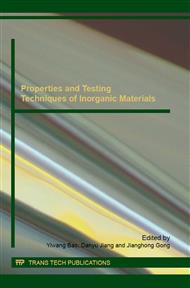p.507
p.511
p.515
p.520
p.525
p.529
p.534
p.538
p.543
Effects of Diluent on Mechanical Properties of Hollow Glass Microsphere Reinforced Epoxy Resin Composite
Abstract:
In order to improve the mechanical properties of hollow glass microspheres (HGMs) reinforced epoxy resin composite, diluent was added in the system of epoxy resin. The results revealed that more HGMs can be filled in the epoxy resin when appropriate amount diluent was added in the system, thus composite with relative low bulk density 0.70g/cm3 and high compressive strength 71.85MPa was obtained. It was due to that the diluent reduce the viscosity of the epoxy resin, which ensures uniform wetting of the fillers and enables more HGMs to be filled in resin. Besides, addition of diluent improved the adhesive strength between the epoxy resin and HGMs, making the composite having a relative high specific strength and can be used in weight sensitive filed.
Info:
Periodical:
Pages:
525-528
Citation:
Online since:
February 2016
Authors:
Keywords:
Price:
Сopyright:
© 2016 Trans Tech Publications Ltd. All Rights Reserved
Share:
Citation:


